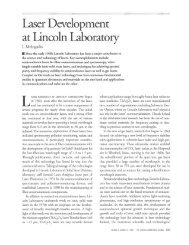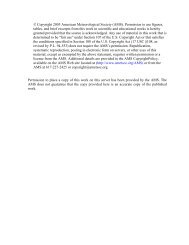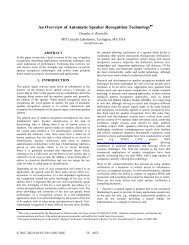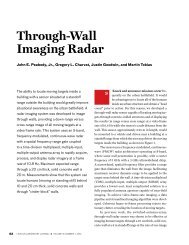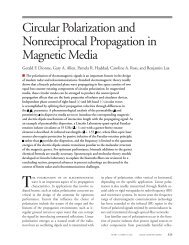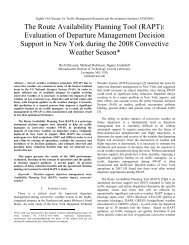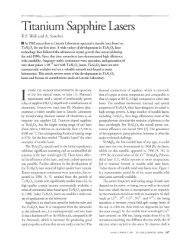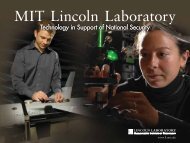Automated Flight Strip Management System Functional Description
Automated Flight Strip Management System Functional Description
Automated Flight Strip Management System Functional Description
You also want an ePaper? Increase the reach of your titles
YUMPU automatically turns print PDFs into web optimized ePapers that Google loves.
1. INTRODUCTION<br />
The purpose of this document is to provide a functional description of the<br />
<strong>Automated</strong> <strong>Strip</strong> <strong>Management</strong> <strong>System</strong> (ASMS). ASMS is designed to be an improvement<br />
over the current manual system ofpaper flight data strips, plastic holders, metal racks and<br />
felt-tip markers now employed in the Tower Cabs and TRACONS at major airports. The<br />
objectives for ASMS include improved coordination between controllers, a reduction of<br />
controller workload, and the automation of most manual record keeping procedures.<br />
ASMS will provide position-specific information to the controller when he or she needs it<br />
in a manner that displays the data in the most useable fonn for the controller to accomplish<br />
his or her job. ASMS will provide a better interface with controllers for data entry and<br />
transfer than exists with the present manual system, reducing the chance for errors and<br />
increasing productivity. Additionally, ASMS is intended to provide the Traffic<br />
<strong>Management</strong> Unit (TMU) in the Air Route Traffic Control Center (ARTCC) real time<br />
ground information suitable for traffic management, reducing or eliminating the<br />
requirement for voice communications.<br />
In addition to the objectives listed above, the implementation ofASMS at Logan<br />
Tower will remedy a deficiency in the existing system for passing <strong>Flight</strong> Progress <strong>Strip</strong><br />
data for departing aircraft from the Tower Cab to the TRACON located in an adjacent<br />
building. The present method employs a video camera in the cab pointed down at the rack<br />
of <strong>Flight</strong> Progress <strong>Strip</strong>s at the Local Control position and two TV monitors in the<br />
TRACON. As a result ofreflections, variations in tower light levels, and low TV<br />
resolution, this system has been judged to be inadequate. Although solving an immediate<br />
and serious problem specific to Boston's Logan Tower, ASMS will be designed for use at<br />
any major tower replacing other means of flight data communications currently employed in<br />
the ATC system including voice and drop tubes.<br />
This document first describes the ASMS program and gives a high level functional<br />
overview. Next, the current flight strip system.at Boston Logan is reviewed and described<br />
for both the Tower Cab and TRACON with emphasis on the information recorded and<br />
needed as the flight strip progresses through the system. This includes a description of the<br />
aircraft stages (or states) during the departure and arrival process in terms of information<br />
known at each stage (by controller and aircraft) and possible transfers to succeeding stages<br />
or states. Finally, the system requirements are described in detail including specific<br />
requirements for each controller position. The main technical challenge for ASMS will be<br />
the development ofcontroller interfaces that provide an operationally suitable system in the<br />
Tower cab environment. For this reason, the human factors functions and requirements<br />
have been separated from the "information" functions and requirements in this document.<br />
The prototype system will be designed to allow changes in the controller/ASMS interface as<br />
operational experience is gained.<br />
1



